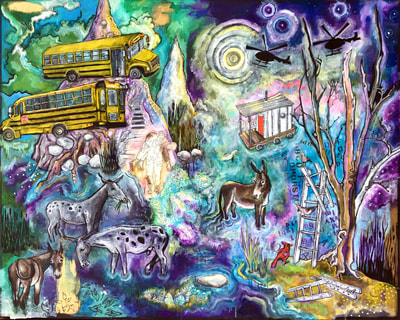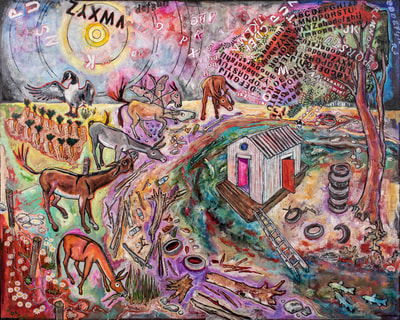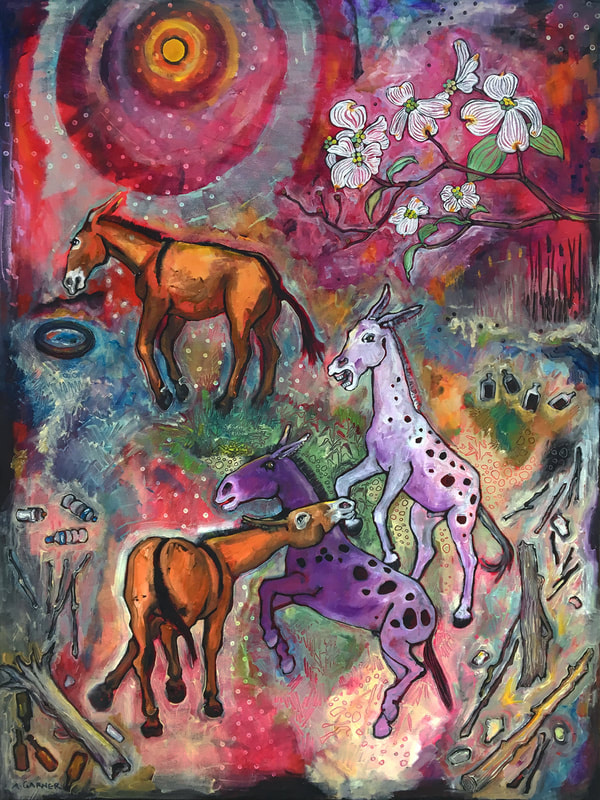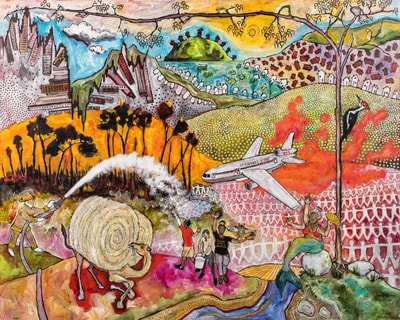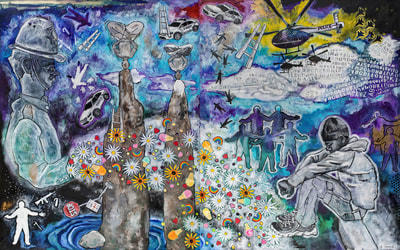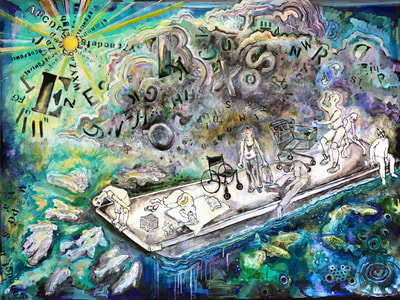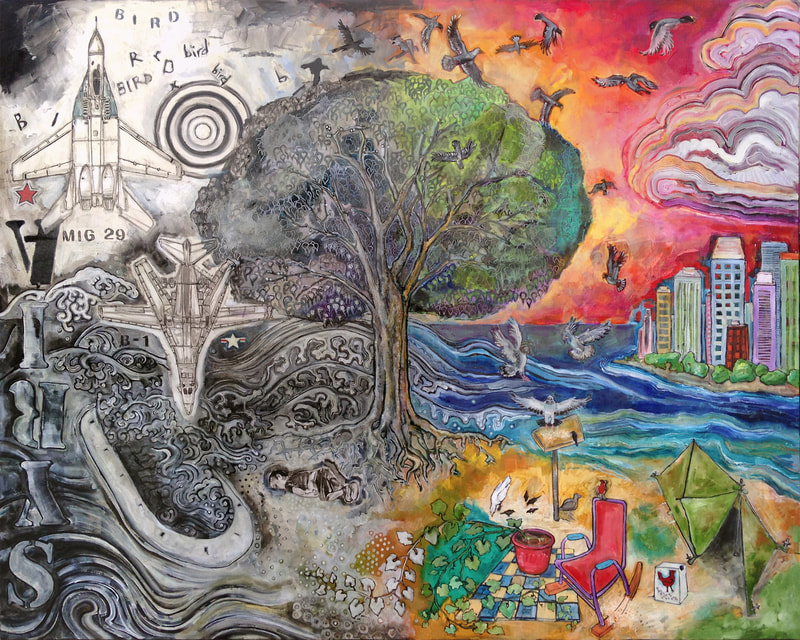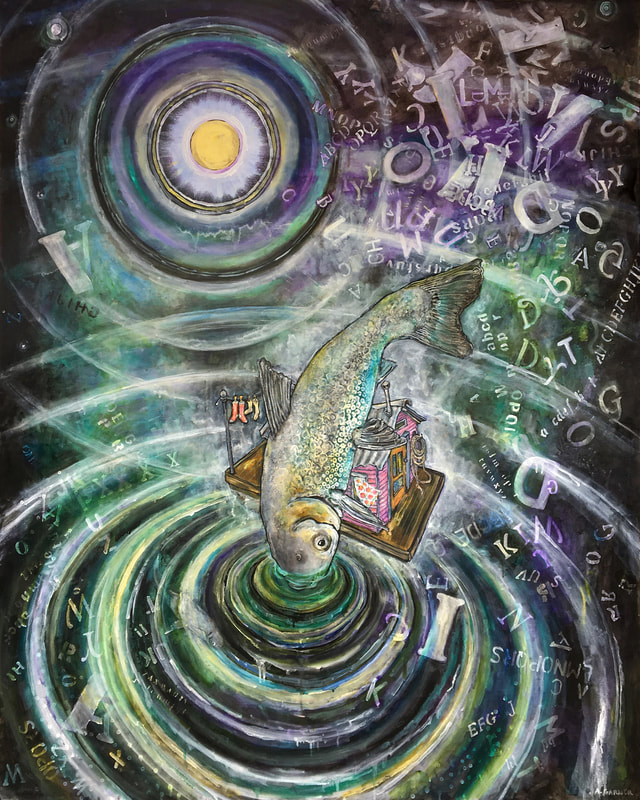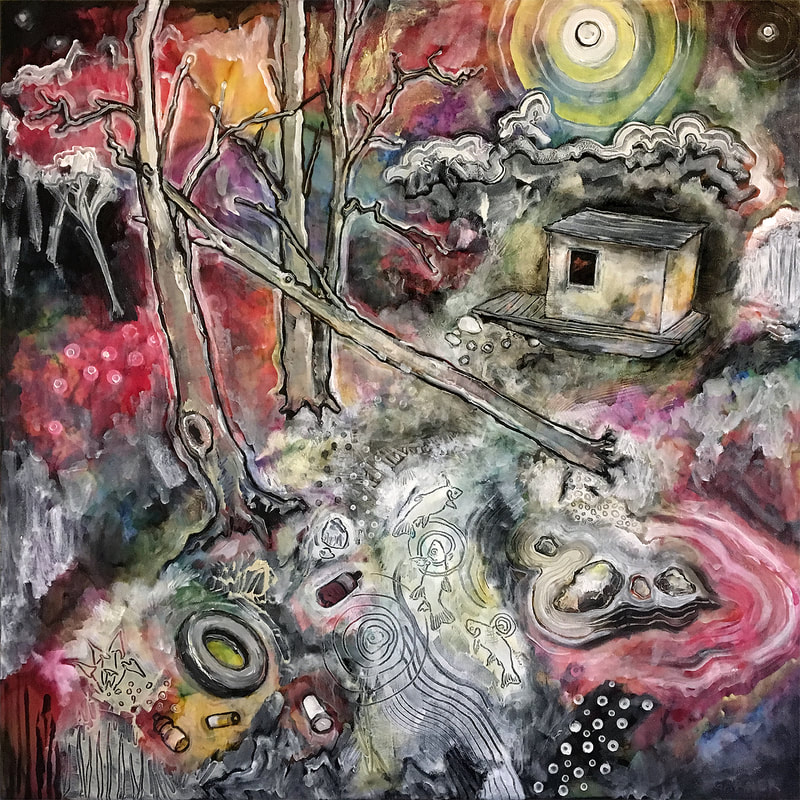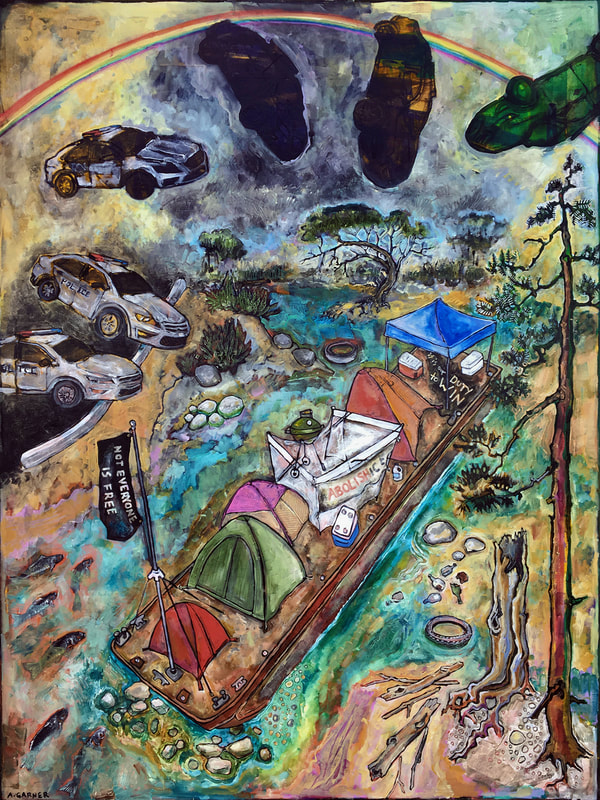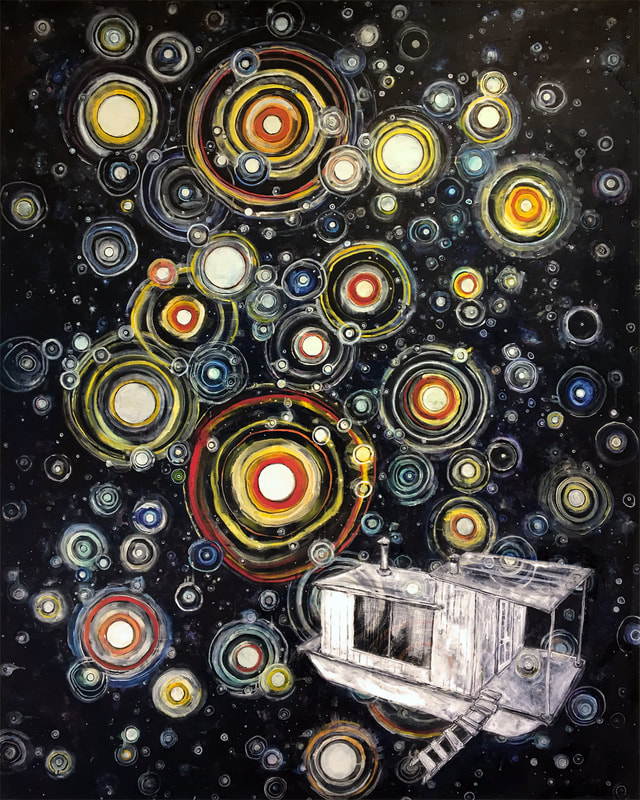Angie Reed Garner
shantyboating
artist statement
Harlan Hubbard brought me hope in the miserable parts of my 20s, overwhelmed by artist life problems which all had one stinking, obvious and completely unacceptable solution: stop painting and get a real job.
Thoreau, whom I always read Hubbard against, was not much use to my situation. I couldn’t see how to score the long term use of a cottage, let alone one with wealthy, congenial neighbors who would feed me dinner every night and facilitate a life-sustaining balance of solitude and human contact.
I had no theories to prove. I merely wanted to try living by my own hands, independent as far as possible from a system of division of labor in which the participant loses most of the pleasure of making and growing things for himself. I wanted to bring in my own fuel and smell its sweet smell as it burned on the hearth I had made. I wanted to grow my own food, catch it in the river, or forage after it. In short, I wanted to do as much as I could for myself, because I had already realized from partial experience the inexpressible joy of so doing. – Harlan Hubbard, Shantyboat (1953)
But I wasn't so sure about literal shantyboating as a solution for me. I could fish, clean what I caught and make a meal out of it, but I had no stomach for hurting and killing the creatures. I’d have to live off peanut butter. What I knew something about was gardening, but power tools still scared me. Would I freeze or drown first, in any boat I got and kept for myself?
While I have some true, beloved and never-forgotten patrons of the arts in my story, their help came in the form of just-in-time gifts: art supplies. Out-of-the-blue portrait commissions when my bank account hit $7. The cash to get my first critical solo show of paintings matted and framed. My patrons were looking to support someone hustling hard. Hubbard provided the only answer— DIY, self-help, gritty —that I was going to get, coming from Kentucky as I did.
Hubbard’s determination to make his own way, choosing his terms and accepting their consequences did not depend on anything like having a boat, but a marriage of necessity and creativity. It also helped clearly to be partnered only with the right person; partner carefully is still some of the best advice any artist can get.
As for me, I would have to go shantyboating without a river or a boat; I’d dock myself wherever I could find a welcome or tolerance anyway, sell and live off the art I made, however humbly.
Decades later, after I opened a gallery with my mother in downtown Louisville KY, Paul Hassfurder paid us a visit and responded to the art he saw. He tentatively mentioned he was an artist, and taking care of Payne Hollow; did I know about the Hubbards? Oh yes, I said. I was thinking of Hubbard more and more of late, while I struggled with issues around gentrification, commodity culture, and how it is harder than ever for people to make a home or move, meanwhile easier than ever for capital to up and depart.
shantyboating
artist statement
Harlan Hubbard brought me hope in the miserable parts of my 20s, overwhelmed by artist life problems which all had one stinking, obvious and completely unacceptable solution: stop painting and get a real job.
Thoreau, whom I always read Hubbard against, was not much use to my situation. I couldn’t see how to score the long term use of a cottage, let alone one with wealthy, congenial neighbors who would feed me dinner every night and facilitate a life-sustaining balance of solitude and human contact.
I had no theories to prove. I merely wanted to try living by my own hands, independent as far as possible from a system of division of labor in which the participant loses most of the pleasure of making and growing things for himself. I wanted to bring in my own fuel and smell its sweet smell as it burned on the hearth I had made. I wanted to grow my own food, catch it in the river, or forage after it. In short, I wanted to do as much as I could for myself, because I had already realized from partial experience the inexpressible joy of so doing. – Harlan Hubbard, Shantyboat (1953)
But I wasn't so sure about literal shantyboating as a solution for me. I could fish, clean what I caught and make a meal out of it, but I had no stomach for hurting and killing the creatures. I’d have to live off peanut butter. What I knew something about was gardening, but power tools still scared me. Would I freeze or drown first, in any boat I got and kept for myself?
While I have some true, beloved and never-forgotten patrons of the arts in my story, their help came in the form of just-in-time gifts: art supplies. Out-of-the-blue portrait commissions when my bank account hit $7. The cash to get my first critical solo show of paintings matted and framed. My patrons were looking to support someone hustling hard. Hubbard provided the only answer— DIY, self-help, gritty —that I was going to get, coming from Kentucky as I did.
Hubbard’s determination to make his own way, choosing his terms and accepting their consequences did not depend on anything like having a boat, but a marriage of necessity and creativity. It also helped clearly to be partnered only with the right person; partner carefully is still some of the best advice any artist can get.
As for me, I would have to go shantyboating without a river or a boat; I’d dock myself wherever I could find a welcome or tolerance anyway, sell and live off the art I made, however humbly.
Decades later, after I opened a gallery with my mother in downtown Louisville KY, Paul Hassfurder paid us a visit and responded to the art he saw. He tentatively mentioned he was an artist, and taking care of Payne Hollow; did I know about the Hubbards? Oh yes, I said. I was thinking of Hubbard more and more of late, while I struggled with issues around gentrification, commodity culture, and how it is harder than ever for people to make a home or move, meanwhile easier than ever for capital to up and depart.
